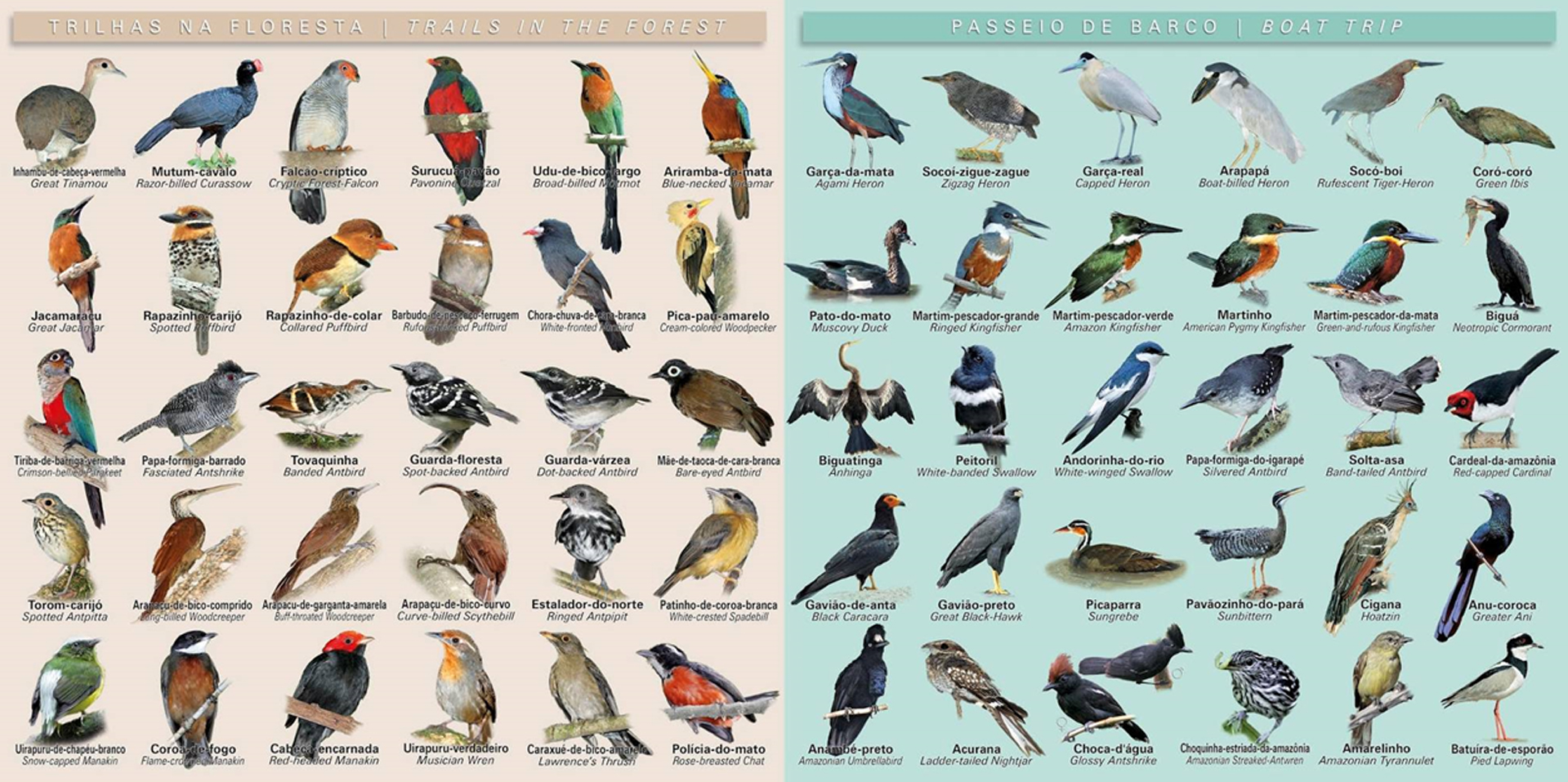About Fauna & Flora
FAUNA
The Amazon fauna is the most spectacular on the planet, including felines, rodents, birds, turtles and primates.
Its hydrographic basin has the largest diversity of fish in the world: between 2,500 and 3,000 species. Of these, jaú, surubim, dog, matrinxã, piranha and tambaqui are some of the most coveted of sport fishing lovers. However, the list of favorites is headed by tucunaré, famous for being very good fight.Its hydrographic basin has the largest diversity of fish in the world: between 2,500 and 3,000 species. Of these, jaú, surubim, dog, matrinxã, piranha and tambaqui are some of the most coveted of sport fishing lovers. However, the list of favorites is headed by tucunaré, famous for being very good fight.
In addition, in the Amazon there are 1,300 species of birds and 300 species of mammals. In total, the fauna of the region totals over 2 million species, many of which are found only in the region. Often researchers discover new species. Some animals are beyond exotic: they are the manatees (over 2 meters in length), the red-feathered maned bird, and the "electric fish" that release high voltage charges.
Not to mention already famous species such as toucan, piranha, macaws, parrots and monkeys.
The image on this slide is a folder handed out to the guests of the Cristalino Lodge upon arrival. Due to its isolation, and for being a transition area from the Pantanal and Cerrado to the South Amazon, there are also animals from these biomes. A few of the animals are endemic only to this region.
FLORA
The Amazonian flora is blessed by nature. Amid the forest there are numerous edible, oilseed, medicinal and dyestuff species. Of the 100,000 plant species present in Latin America, about 30,000 are in the Amazon. The most famous plant is the Victoria Lily, the symbol flower of the Amazon. Known as the "queen of the lakes", the regal victory opens its leaves in shallow waters, forming a round green tray. It even measures from 1m to 1.80m in diameter. It was baptized by this name by an English naturalist to honor Queen Victoria for her exuberance. The flower changes color over time; on the first opening day, the buttons are white and turn pink on the second day. From the third day begins to bloom at 17h and completes the cycle at 21 hours.
The varying degrees of humidity during the river flooding, soil quality, wind and rainfall provided very distinct plant formations. The sum of them is that it forms a unique region on the planet and gives life to the great Amazonian biodiversity.
1.294 bird species have been registered in the Amazon. Some are migrating populations that come from as far North as Canada (Nov to Mar) and as South as Patagonia (May to Sep).
Toucans, macaws, parrots, kingfishers, herons, curassows, hoatzins, vultures, hawks are the most commonly seen.
Vegetation can be divided into three types:
Dryland Forests
They occupy non-flooding lands. They have 140 to 280 species per hectare, including the large hardwood trees of the Amazon. In some places the treetops are so large that they prevent up to 95% of sunlight from passing through. The main representatives of this type of vegetation are cedar, mahogany, stone angelim, Brazil nut tree, rubber tree, guarana and timbó, a tree used by the Indians to poison the fish.
Igapó Forest
They occupy the lower ground near the rivers and are permanently flooded. During the flood period, the waters reach the tops of the trees, forming the "igapós". When this phenomenon occurs in small rivers and tributaries, they are called "igarapés". Most trees are between 2m and 3m, but some reach up to 20m in height. The most famous species of this type of forest is the royal lily.
Varzea Forest
They are located between the mainland and the igapós. They present about 100 plant species per hectare. There are three categories: low and intermediate floodplain (with predominance of palm trees and some species whose roots help in oxygen fixation) and high floodplain (with soil less affected by tidal waters and higher biomass thanks to tree species such as andiroba). It is made up of large trees such as rubber tree, palm trees and jatoba.

